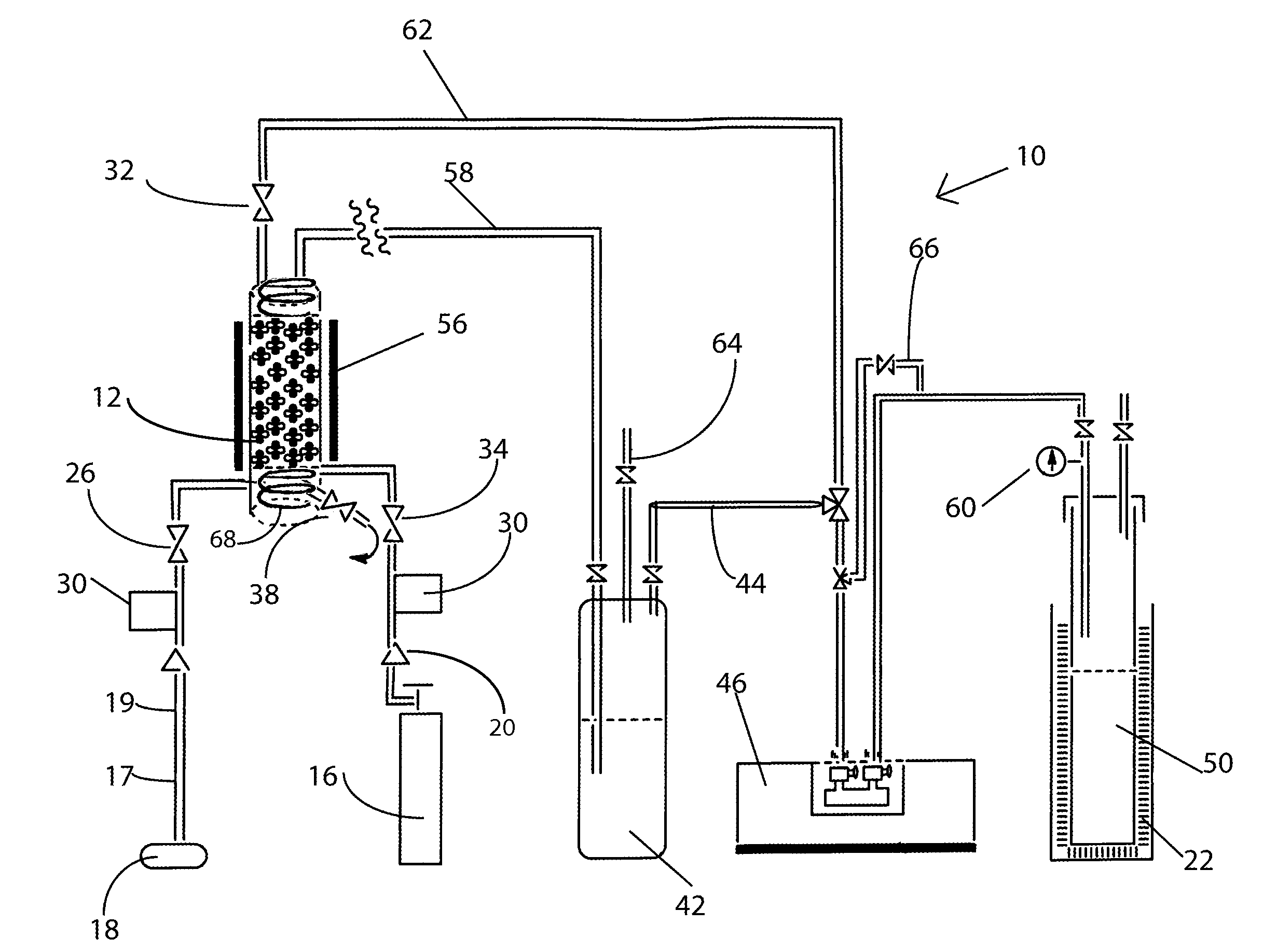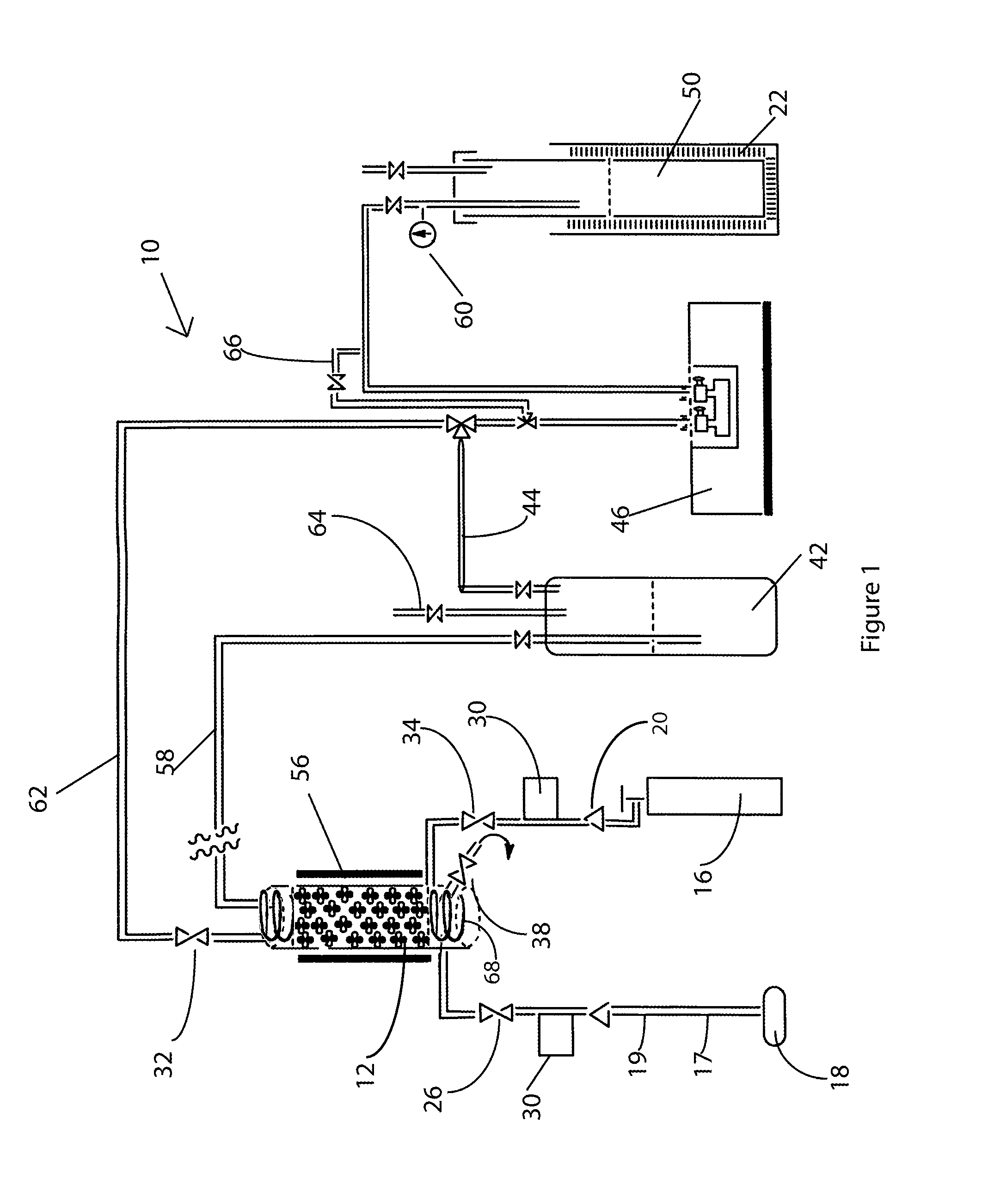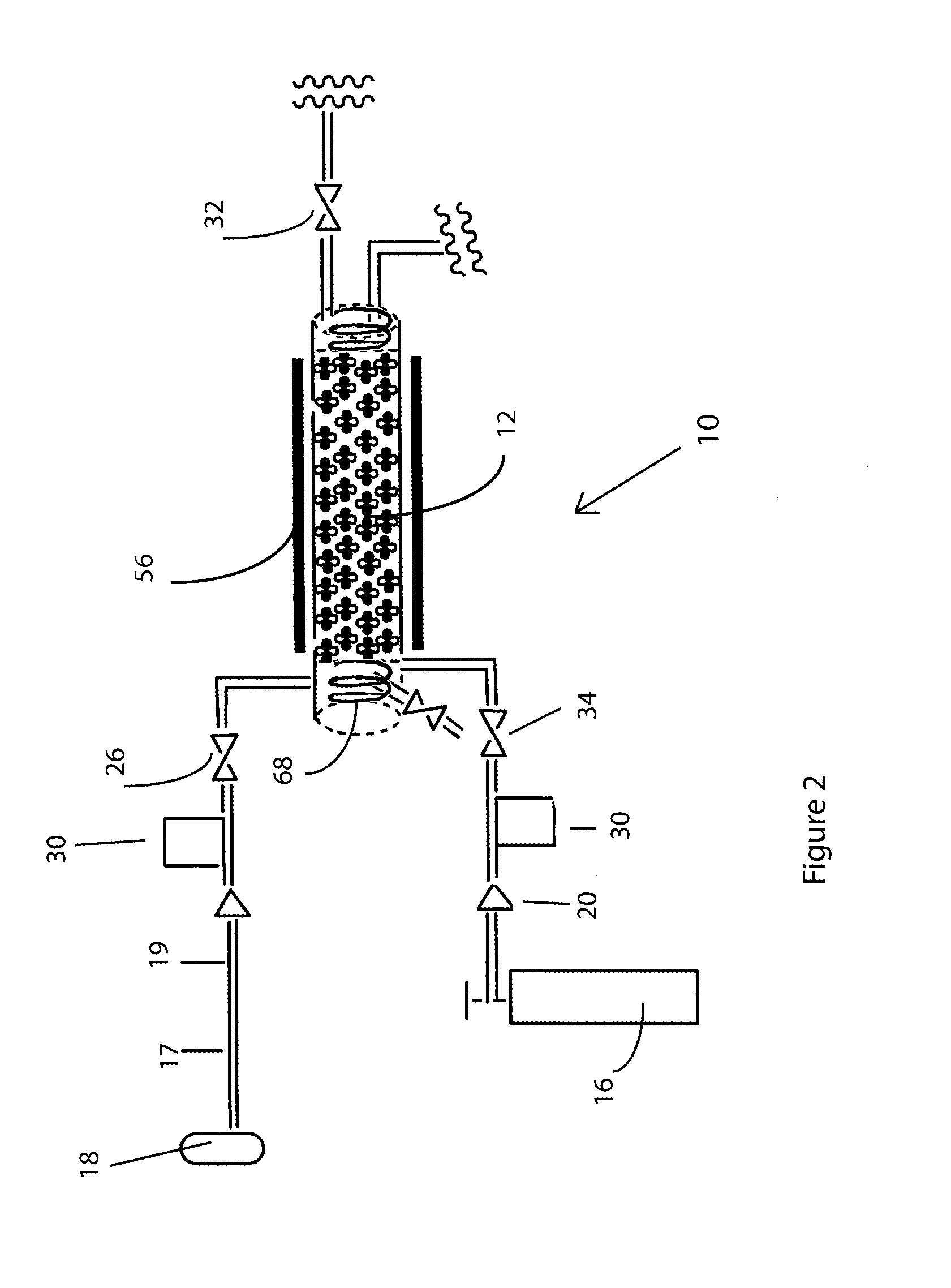Method for production of sulfur hexafluoride from sulfur tetrafluoride
a technology of tetrafluoride and sulfur hexafluoride, which is applied in the direction of sulfur compounds, inorganic gases, inorganic insulators, etc., can solve the problems of cost prohibitive industrial process and process, and achieve the effects of improving reaction rate, improving diffusion rate, and improving process reaction ra
- Summary
- Abstract
- Description
- Claims
- Application Information
AI Technical Summary
Benefits of technology
Problems solved by technology
Method used
Image
Examples
Embodiment Construction
[0020]Fluorination of sulfur tetrafluoride with elemental fluorine in the presence of CoF3 proceeds under external-kinetic control since the CoF3 concentration in the surface layer is constant owing to timely or even advance supply of fluorine (Eqn. 4). The method of fluorination of SF4 is designated 10 in the figures and is shown in FIG. 1 in a vertical reactor column 12 made from nickel, with an internal diameter (i. d.)=1½″, height=16″. The reactor was packed with CoF3 with a bed height of 12″, for a space volume of 21 in3 or 348 cc. A hinged three-heater Lindberg Blue furnace 56 with thermostat controller was used to ensure that temperature variation throughout the bed did not exceed ±4° C. throughout the process. Independent flows to ensure stoichiometric reagents, i.e. SF4 and F2, as well as the sweep gas (where necessary), i.e. N2, argon, or helium, were allowed to mix in the reactor, just before the introduction to the CoF3 bed. The mixture was supplied at constant rates to ...
PUM
| Property | Measurement | Unit |
|---|---|---|
| temperature | aaaaa | aaaaa |
| temperature | aaaaa | aaaaa |
| pressure | aaaaa | aaaaa |
Abstract
Description
Claims
Application Information
 Login to View More
Login to View More - R&D
- Intellectual Property
- Life Sciences
- Materials
- Tech Scout
- Unparalleled Data Quality
- Higher Quality Content
- 60% Fewer Hallucinations
Browse by: Latest US Patents, China's latest patents, Technical Efficacy Thesaurus, Application Domain, Technology Topic, Popular Technical Reports.
© 2025 PatSnap. All rights reserved.Legal|Privacy policy|Modern Slavery Act Transparency Statement|Sitemap|About US| Contact US: help@patsnap.com



